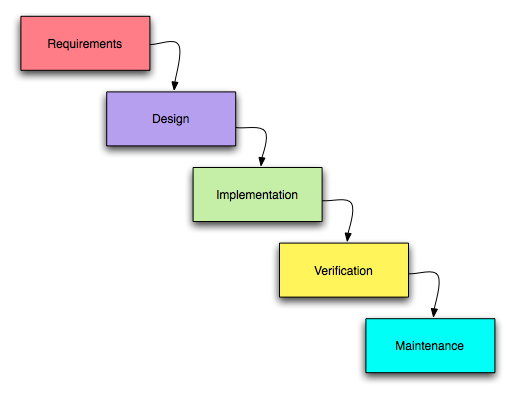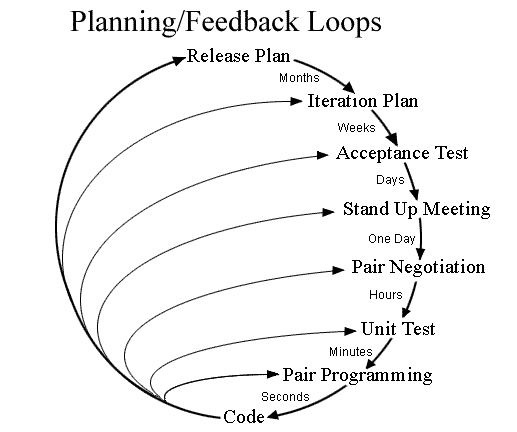SOFTWARE TESTING METHODOLOGIES
This page lists and explains the most popular software testing methodologies and techniques that are important to know for all software testing.AGILE SOFTWARE DEVELOPMENT
Agile development methods tend to promote teamwork and collaboration. The agile development process isn’t sequential (code, test, debug, release), like traditional development processes; nor is it iterative; it combines concepts of both.
Twelve principles underlie the Agile Manifesto, including:
- Customer satisfaction by rapid delivery of useful software
- Welcome changing requirements, even late in development.
- Working software is delivered frequently (weeks rather than months)
- Working software is the principal measure of progress
- Sustainable development, able to maintain a constant pace
- Close, daily cooperation between businesspeople and developers
- Face-to-face conversation is the best form of communication (co-location)
- Projects are built around motivated individuals, who should be trusted
- Continuous attention to technical excellence and good design
- Simplicity
- Self-organizing teams
- Regular adaptation to changing circumstances
CLEANROOM SOFTWARE ENGINEERING
The Cleanroom Software Engineering process is a software development process intended to produce software with a certifiable level of reliability:- Cleanroom development uses on formal methods in the design and specification of a software product. A team verifies that the design correctly implements the spec.
- Development and testing is done using an iterative approach, where functionality is added to the product incrementally (as opposed to creating all of the functionality first, THEN testing it).
- Software testing is performed as a statistical experiment.
ITERATIVE SOFTWARE DEVELOPMENT
Iterative development is at the heart of a cyclic software development process; it starts with an initial planning and ends with deployment with the cyclic interactions in between.
Iterative development is NOT the same thing as incremental development, although the two methodologies do complement each other.
Two steps are involved in iterative development:
- Initialization: Creates a base version of the system.
- Iteration: The current version of the system is analyzed, and is redesigned and implemented based on the Project Control list.
RAPID APPLICATION DEVELOPMENT (RAD)
In place of extensive planning, RAD makes heavy use of prototyping.In Rapid Application Development, structured techniques and prototyping are especially used to define users’ requirements and to design the final system. The development process starts with the development of preliminary data models and business process models using structured techniques. In the next stage, requirements are verified using prototyping, eventually to refine the data and process models. These stages are repeated iteratively.
RATIONAL UNIFIED PROCESS (RUP)
The Rational Unified Process is a framework intended to be customized by software development teams, for their individual needs. It was created by Rational Software (which is now part of IBM).RUP emphasises six best practices for modern software engineering:
- Develop iteratively, with risk as the primary iteration driver
- Manage requirements
- Employ a component-based architecture
- Model software visually
- Continuously verify quality
- Control changes
SPIRAL SOFTWARE DEVELOPMENT
The Spiral Model is an iterative model that attempts to combine advantages of the top-down and bottom-up models of software design.The system requirements are defined in as much detail as possible. This usually involves interviewing a number of users representing all the external or internal users and other aspects of the existing system.
- A preliminary design is created for the new system. This phase is the most important part of the Spiral Model.
- A first prototype of the new system is constructed from the preliminary design.
- A second prototype is evolved by a fourfold procedure:
- evaluating the first prototype in terms of its strengths, weaknesses, and risks;
- defining the requirements of the second prototype;
- planning and designing the second prototype;
- constructing and testing the second prototype.
WATERFALL SOFTWARE DEVELOPMENT
The waterfall model is a sequential design process comprised of the following steps, each of which must be completed before the next starts:
- Design
- Construction/implementation
- Integration
- Testing/debugging/validation)
- Installation
- Maintenance
XP
Extreme Programming (XP) is intended to improve software quality and responsiveness to changing customer requirements. by advocating frequent “releases” in short development cycles, which is intended to improve productivity and introduce checkpoints where new customer requirements can be adopted. Features are not added until they are actually needed. Extreme Programming also encourages programming in pairs, along with frequent communication between members of the development team, and between the developers and clients.
Lean
Lean development could be summarized by seven principles, very close in concept to lean manufacturing principles.Everything not adding value to the customer is considered to be waste, including:
- unnecessary code and functionality
- delay in the software development process
- unclear requirements
- bureaucracy
- slow internal communication
Scrum
Scrum is an iterative methodology used in agile software development.During each “sprint”, typically a two to four week period (with the length being decided by the team), the team creates a potentially shippable product increment (for example, working and tested software). The set of features that go into a sprint come from the product “backlog”, which is a prioritized set of high level requirements of work to be done. Development is timeboxed such that the sprint must end on time; if requirements are not completed for any reason they are left out and returned to the product backlog. After a sprint is completed, the team demonstrates how to use the software.
V-Model
The V-model is a software development process which may be considered an extension of the waterfall model. Instead of moving down in a linear way, the process steps are bent upwards after the coding phase, to form the typical V shape. The V-Model demonstrates the relationships between each phase of the development life cycle and its associated phase of testing.








Thanks for sharing as it is an excellent post would love to read your future post -for more knowledge
ReplyDeleteCSPO Training Courses in Bangalore | CSPO Certification Training in Bangalore